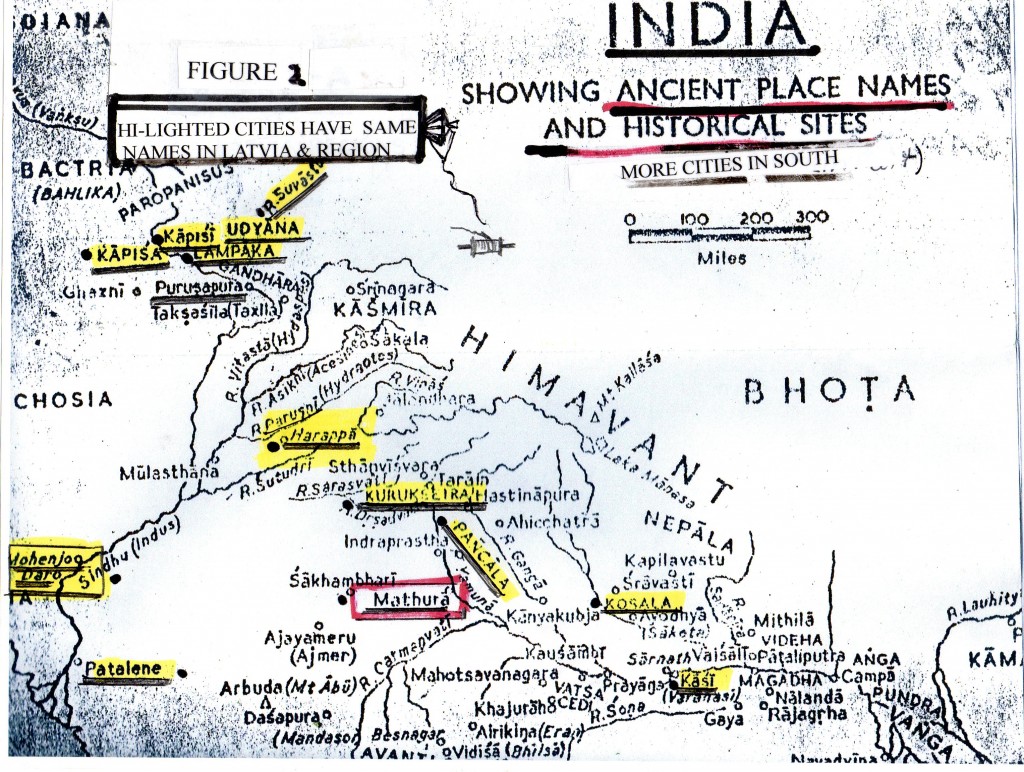Topical Area- (1)
Chapter I-1A Indo Aryan Heritage and Vedic Hindu Beliefs
1. Theology or History
Most of us are not fully aware of our rich heritage and details of our Vedic Hindu beliefs.
Details began to appear by 5,000 B.C. Later, it will be shown that these beliefs have broader applications and it will be shown to have significance in defining the origin of our universe and most of its elements inert also follow the eternal Karma Cycle like that for us living beings.
When I was young there was no formal teaching of the history and theology of our origin and ancestry. My wife, Biruta, always argued that we have Indo-Aryan lineage. I myself did not quite believe t hat, until her brother presented me an old historical map of India with some 30 towns highlighted as also the same name towns in Latvia.
Further, he listed some 60 words that have the same meanings in Hindi/Sanskrit and Latvian languages. So, I started myself to find more details about our origin.
2. Indo-Aryan Civilization
History of India began 75,000 B.C. with the immigration of homo-sapiens. But facts began to appear 5,000-1,000 B.C. about the Indus Valley Civilization and associated Vedic Hindu beliefs and have broader practical applications.
In that period northern India, specifically the Indus Valley, was the richest region in the world. Riches of the earth (minerals, precious stones and fertile soil) brought down by the river Sindh and the twin rivers Jamuna and Ganga.
The Thriving region attracted Aryan and Greek traders from the north, who later conquered the region (1560 B.C.). In a land of plenty and peaceful living, the Aryans opted to mingle with the original Indians, the Dravadian, and settled down in the valley to build a peaceful society.
Together they developed a vibrant hybrid culture combining with the already rich Dravadian Culture of 5,000 B.C. era. The following period is known as Bronze Age or Vedic Period and in India a Golden Sparrow.
Aryans brought with them new ideas, philosophies, gods and technologies. Technologies of that period included: urban culture (roads, drainage/irrigation, libraries and village organization) and many Vedic sciences.
In this period, the oldest known literature, the four Vedas and Upriashid were written that documented the Vedic vision, knowledge of sciences (Vedic Medicine, mathematics and astronomy) aided by the years of experience gained by Rishis, Sages through Smathies.
They discovered the heliocentric nature of the universe, the use of zeros to extend the range of mathematical calculations beyond 9, and determination of the circumference of the Earth, the height of the temples using their own earlier version of “pie” and Pythagoras Theorem.
The flowering of this culture peaked just when Europe was in the Dark Ages and the fall of the Roman Empire was in process.


Leave a Reply
You must be logged in to post a comment.